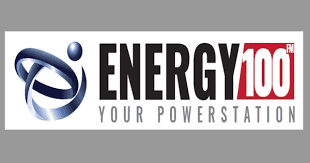
Our oil dreams have just been re-ignited
A flurry of excitement added some push to the usual summer afternoon wind battering Walvis Bay from the south west with the arrival of a drill rig intended for HRT’s two prospecting blocks on the northern fringe of the so-called Orange basin.
As far as I know this is the first time ever that a rig of any kind has actually entered the harbour itself. The odd rig that passed the port en route from either Cabinda or Nigeria to Cape Town, always laid moored a fair distance off. Granted this is a drill rig and not a proper oil rig, so it is a much smaller animal, and that is the reason why it fits smack inside the harbour.
But rig design and engineering are not what tickles my fancy. The ultimate riddle that has to be solved is whether commercially viable oil fields exist in the offshore seabed, and if they do, where are they? So far, two holes have been drilled by London-listed Chariot Oil, and both still only contain seawater, so the immediate expectations are not good.
But HRT is not entirely clueless where oil prospecting is concerned. The company is financing its oil exploration activities through several paper issuances on the Bovespa in Sao Paulo focussing on HRT’s oil exploration projects in the Amazon basin where conditions are easier than 1000 metres below the surface of the Atlantic Ocean. The offshore exploration in Namibia is prospected as an additional benefit should oil be discovered here. So it is actually the better expectation for discovering oil in the Amazon that is papering over HRT’s operational costs in our Exclusive Economic Zone.
Nevertheless, the rig has arrived last Wednesday, very early in the morning setting of a chain of responses from the ports authority, the chamber of commerce, and other interested parties who, hopefully, were not involved last year when an elected in parliament announced we have already discovered oil and that there are so many billion of barrels of the stuff.
I assume, purely from an investment point of view, the people working for HRT know what they are doing, although I am also not fully convinced of this. Whether one thinks the HRT launch was in good style or not, is irrelevant. What was very obvious is that this company knows how to play the politics and will not shy away from actively doing so. Remember the posse of Samba dancer that moved Windhoek that evening and the slightly embarrassing situation when some of them ended up on the laps of the high brass.
Nevertheless, the HRT rig is here and will stay in the harbour for another two weeks. It is the Transocean Marianas, an Earl & Wright Sedco 700 semi-submersible drill rig and it will be towed to the drill site after completion of the mandatory inspection. Actual drilling is expected to start around the end of April and within another month, we should know if HRT found the black gold.
Fortunately, as far as I know, Petrobras has been co-opted as HRT’s technical partner so whatever results are obtained from the drilling, can be deemed reliable. Petrobras, the Brazilian state oil utility, is the discoverer of the Tupi oil field in the South Atlantic, the first significant deep sea oil discovery anywhere in the world.
Perhaps the most important elements in HRT’s work of the next two months is the locality where they will drill. Their acreage is spread over two prospecting blocks, 1801 and 1802 on the rim of the Orange Basin which is considered to be the same geological structure as the Kudu gas field. So, in a sense, one can argue that hydrocarbons have already been discovered in this morphology, as far back as 1974, and that now it is only a matter of pinpointing the more fluid pockets of this seemingly consistent subterranean complex. That is the positive take.
The negative reality is that since 1974 a myriad of seismic surveys that created the plethora of proprietary 2D seismic data, as well as a small number of holes, have only confirmed the presence of gas, and in some cases, of nothing.
Whether you staunchly believe there is oil, I suppose depends to a large extent on how deeply your are committed to this project either financially or politically. But there is nothing in the models that precludes the existence of oil. It may be there or it may turn out to be more gas. The South African government desperately wanted to find oil in the Kudu gas field but never did. The sole reason why they drilled the holes in the first place was to find oil, not for anything else.















































